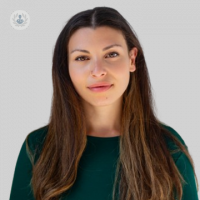Understanding trauma bonding in relationships
Autore:Trauma bonding is a complex and often misunderstood psychological phenomenon that occurs in relationships characterised by intense high and lows, involving extreme affection followed by control and manipulation. In her latest online article, Dr Sarah Alsawy-Davies aims to shed light on what trauma bonding is, how it develops, and most importantly, how individuals can break free from its chains to foster healthier connections.

What is trauma bonding?
Trauma bonding refers to the strong emotional connection that develops between two people, where there is often an enmeshed cycle of love and abuse.
How trauma bonding develops:
Intermittent reinforcement: Trauma bonding is reinforced by intermittent positive reinforcement amid the abuse. Abusers might alternate between periods of kindness and attack and / or neglect, creating a cycle that keeps the victim emotionally invested, hoping for the return of positive behaviour. Initially, there is a period of love bombing where there is excessive attention and admiration placed on an individual, followed by trust and dependency in which both lives become intertwined. These phases include romanticising an ideal future together, creating a ‘magical’ feeling and that their love is special. When commitment develops, gradually experiences of emotional distance and neglect increase, along with criticism that may first appear innocuous then progresses into personal attacks. Subsequently, there are issues of manipulation which catches the individual off-guard, who at this point begins to lose their sense of self and submit all control to their partner. This cycle becomes addictive as the individual believes that “you are the person who broke me, but you are the only one who can save me”; continuously seeking validation from their hurtful partner and they feel soothed when they experience glimpses of affection.
Breaking the chains of trauma bonding:
- Recognising the pattern: Awareness is the first step towards breaking free from trauma bonding. Victims need to recognise the toxic pattern in their relationships and acknowledge the negative impact it has on their mental and emotional well-being.
- Seeking professional help: Therapists and counsellors play a crucial role in helping individuals understand and overcome trauma bonding. Expert guidance creates a secure environment for individuals who have experienced trauma to delve into their emotions, build effective coping strategies, and strive to break the cycle of their challenges.
- Building a support system: Reconnecting with friends, family, and support networks helps counter the isolation enforced by abusers. Building a strong support system provides emotional stability and reinforces healthier relationship dynamics.
- Establishing boundaries: Victims of trauma bonding often struggle with setting boundaries. Learning to assert oneself and establish clear boundaries is crucial in breaking the cycle of abuse and fostering healthier relationships.
- Self-care and empowerment: Prioritising self-care and empowering oneself are essential steps towards recovery. Engaging in activities that bring joy and fulfilment helps rebuild a sense of self outside the abusive relationship.
Dr Sarah Alsawy-Davies is an esteemed psychologist and relationship coach. You can schedule an appointment with Dr Alsawy-Davies on her Top Doctors profile.


